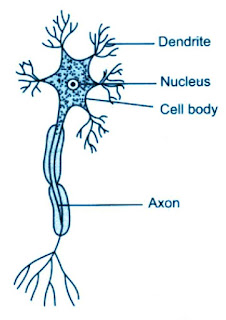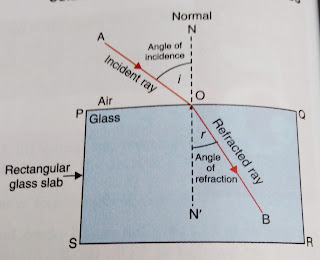MCQ Questions for Class 7 Science Chapter 14 Electric Current and its Effects with Answers
Here you get NCERT MCQ Questions for Class 7 Science Chapter 14 Electric Current and its Effects with Answers Pdf free download.In NCERT Solution for Class 7 Science with Answers you get multiple choice question-answer based on latest exam pattern. By providing NCERT Solutions for Class 7 Science Chapter 14 Electric Current and its Effects with Answers our target to help students get concept of the lesson very well.
You can also visit NCERT MCQ Solutions for Class 7 Science Chapter 14 Electric Current and its Effects to revise your syllabus thoroughly and enhance the chances of securing high marks in your board exams. It also help in your Electric Current and its Effects Class 7 online test, online exam for admission well.
MCQ Questions for Class 7 Science Chapter 14 Electric Current and its Effects with Answers
Question 1. Flow of electrons in a particular direction through a conductor is called
You may also like to visit
- MCQ on Chapter 12 Reproduction in Plants
- MCQ on Chapter 13 Motion and Time
- MCQ on Chapter 6 Physical and Chemical Changes
(a) electorlysis
(b) electroplating
(c) electricity
(d) none of the above
Answer : (c) electricity.
Question 2. The continuous conducting path between the two terminals of the battery
(a) electric current
(b) electric circuits
(c) electric circus
(d) none of the above.
Answer : (b) electric circuits
Question 3. A cell have two terminal
(a) positive and positive
(b) negative and negative
(c) positive and negative
(d) none of the above.
Answer : (c) positive and negative.
Question 4.A diagram which tells us how the various components in a circuit have been connected by using the electrical symbols of the components, is called
(a) electric circuit
(b) electirc current
(c) electricity
(d) circuit diagram
Answer : (d) circuit diagram.
Question 5. When a group of cells joined in series is called
(a) circuit
(b) electricity
(c) battery
(d) none of the above
Answer : (c) battery.
Question 6.When electricity passed through the circuit then the circuit is called
(a) open circuit
(b) electric circuit
(c) short circuit
(d) closed circuit
Answer : (d) closed circuit
Question 7. When electric current can not passed through a circuit, then the circuit is called
(a) open circuit
(b) electric circuit
(c)short circuit
(d) closed circuit
Answer : (a) open circuit
Question 8. When we connect to battery, we connect
(a) positive terminal of one battery to the negative terminal of the other battery
(b) positive terminal of one battery to the positive terminal of the other battery
(c) negative terminal of one battery to the negative terminal of the other battery
(d) none of the above.
Answer : (a) positive terminal of the battery to the negative terminal of the other battery.
Question 9. When we connected positive terminal of one battery to the positive terminal of the other battery, then
(a) we get energy from only one battery
(b) we get energy from both of the battery together
(c) we do not get energy at all
(d) none of the above.
Answer : (c) we do not get energy at all.
Question 10. The batteries used in cars, buses, trucks, inverters are made up of
(a) cells
(b) key
(c) bulb
(d) none of the above
Answer : cells
MCQ Questions for Class 7 Science Chapter 14 Electric Current and its Effects with Answers
Question 11. When electric current pass through a bulb, it is glow. This is
(a) heating effect of current
(b) magnetic effect of current
(c) chemical effect of current
(d) none of the above
Answer : heating effect of current.
Question 12. Producing o electromagnet is the
(a) heating effect of current
(b) magnetic effect of current
(c) chemical effect of current
(d) none of the above
Answer : (b) magnetic effect of current.
Question 13. When electric current passed through acidified water, water breaks down to form hydrogen and oxygen. This is
(a) heating effect of current
(b) magnetic effect of current
(c) chemical effect of current
(d) none of the above.
Answer : (c) chemical effect of current.
Question 14.When electric current pass through a high resistance wire, wire gets heated. This is called
(a) heating effect of current
(b) magnetic effect of current
(c) chemical effect of current
(d) none of the above
Answer : (a) heating effect of current.
Question 15. When elcetric current pass through a wire, it gets heated. Here
(a) chemical energy converted into electric energy
(b) electric energy converted into heat energy
(c) electric energy converted into magnetic energy
(d) none of the above
Answer : (b) electric energy converted into heat energy.
Question 16. When resistance of the wire is more then produce heat by the electric current is
(a) less
(b) remain same
(c) more
(d) none of the above
Answer : (c) more.
Question 17. When magnitude of the current passes through the wire is more then produce heat is
(a) more
(b) less
(c) remain same
(d) none of the above
Answer : (a) more
Question 18. When length of the wire is more then resistance of the wire is
(a) more
(b) less
(c) remain same
(d) none of the above
Answer : (a) more.
Question 19. When the wire is more thicker then the resistance is
(a) less
(b) remain same
(c) more
(d) none of the above
Answer : (a) less
Question 20. Heating appliance are made up of wire having
(a) high resistance
(b) low resistance
(c) moderate resistance
(d) none of the above
Answer : (a) high resistance.
Question 21. The wire used in heating appliance is
(a) copper wire
(b) nichrome wire
(c) aluminium wire
(d) none of the above
Answer : (b) nichrome wire.
Question 22. Filament of the bulb is made up of
(a) nichrome wire
(b) copper wire
(c) aluminium wire
(d) tungsten wire
Answer : (d) tungsten wire.
Question 23. In electric bulb, which energy converted into which energy ?
(a) electric energy converted into only light energy
(b) electric energy converted into magnetic energy
(c) electric energy converted into light and heat energy
(d) electric energy converted into chemical energy.
Answer : (c) electric energy converted into light and heat energy
Question 24. Full form of CFL is
(a) compressed fluorescent lamps
(b) compact fluorescent lamps
(c) compound fluorescent lamps
(d) none of the above
Answer : (b) compact fluorescent lamps.
Question 25. Name the device which prevents electric fire and damage to electrical appliance due to excessive flow of current
(a) key
(b) switch
(c) fuse
(d) none of the above
Answer : (c) fuse.
MCQ Questions for Class 7 Science Chapter 14 Electric Current and its Effects with Answers
Question 26. Full form of ISI is
(a) Indian Standards Institution
(b) Indian Space Institution
(c) Indian Species Institution
(d) none of the above
Answer : (a) Indian Standards Institution
Question 27. Resistance of the fuse is
(a) high
(b) low
(c) moderate
(d) none of the above
Answer : (a) high
Question 28. The melting point of the fuse is
(a) high
(b) low
(c) moderate
(d) none of the above
Answer : (b) low.
Question 29. We use this wire as fuse, because thin wire has
(a) low resistance
(b) moderate resistance
(c) high resistance
(d) none of the above
Answer : (c) high resistance.
Question 30. The touching of live wire to the neutral wire is called
(a) electric circuit
(b) closed circuit
(c) open circuit
(d) short circuit
Answer : (d) short circuit.
Question 31. Amount of current is passes due to short circuit is
(a) very large
(b) very lesser
(c) remain same
(d) none of the above
Answer : (a) very large.
Question 32. When too many electrical appliances are connected to a single socket, it is a cause of
(a) short circuit
(b) electric circuit
(c) closed circuit
(d) overloading
Answer : (d) overloading.
Question 33. Full form of MCB is
(a) Minimum Circuit Breaker
(b) Maximum Circuit Breaker
(c) Miniature Circuit Breaker
(d) None of the above
Answer : (c) Miniature Circuit Breaker.
Question 34. MCB work on the basis of
(a) heating effect of electric current
(b) chemical effect of electric current
(c) magnetic effect of electric current
(d) none of the above
Answer : (c) magnetic effect of electric current.
Question 35. MCB in used now-a-days in place of
(a) bulb
(b) switch
(c) fuse
(d) none of the above
Answer : (c) fuse.
Question 36. The magnet made by using electric current is
(a) natural magnet
(b) artificial magnet
(c) electromagnet
(d) none of the above
Answer : (c) electromagnet.
Question 37. To make electromagnet we use
(a) steel
(b) wood
(c) soft iron
(d) plastic
Answer : (c) soft iron.
Question 38. When we increase the number of turns of a electromagnet then magnetic strength will
(a) increases
(b) decreases
(c) remain same
(d) none of the above
Answer : (a) increases.
Question 39. When amount of current passes through electromagnet is increases then magnetic strength will
(a) increases
(b) decreases
(c) remain same
(d) none of the above
Answer : (a) increases
Question 40. The substances which are attracted by magnet called
(a) chemical substances
(b) non-metal
(c) metal
(d) magnetic substances
Answer : (d) magnetic substances.
Question 41. The substances which are not attracted by magnet called
(a) compound
(b) metal
(c) magnetic substances
(d) non-magnetic substances
Answer : (d) non-magnetic substances.
Question 42. Example of magnetic substance is
(a) wood
(b) plastic
(c) nickle
(d) carbon
Answer : (c) nickle
Question 43. Example of non-magnetic substance is
(a) iron
(b) wood
(c) cobalt
(d) nickel
Answer : (b) wood.
Question 44. In door bell we use
(a) permanent magnet
(b) natural magnet
(c) electromagnet
(d) none of the above
Answer : (c) electromagnet.
Question 45. In a filament-type bulb, a lot of electric energy is wasted in the form of
(a) magnetism
(b) sound
(c) light
(d) heat
Answer : (d) heat.
Question 46. Which is not the feature of a fuse
(a) high resistance and high melting point
(b) low resistance and low melting point
(c) high resistance and low melting point
(d) none of the above
Answer : (c) high resistance and low melting point.
Question 47. The magnetic effect of electric current was discovered by
(a) Maxwell
(b) Darwin
(c) Oersted
(d) Newton
Answer : (c) Oersted.
Question 48. Fuse work on the basis of
(a) heating effect of electric current
(b) magnetic effect of electric current
(c) chemical effect of electric current
(d) none of the above
Answer : (a) heating effect of electric current.
Question 49. Tungsten is used in
(a) electric fuse
(b) hair-dryer
(c) MCB
(d) electrical bulb
Answer : (d) electrical bulb.
Question 50. Circuit breaker device which is used in place of fuse is
(a) CBD
(b) DCB
(c) MCD
(d) MCB
Answer : (d) MCB.
We try to give some information about MCQ Questions for Class 7 Science Chapter 14 Electric Current and its Effects with Answers Pdf free download which may help you. For any suggestion or any queries regarding Electric Current and its Effects CBSE Class 7 Science MCQ Multiple Choice Questions with Answers, drop a comment below and we will joined you soon.

